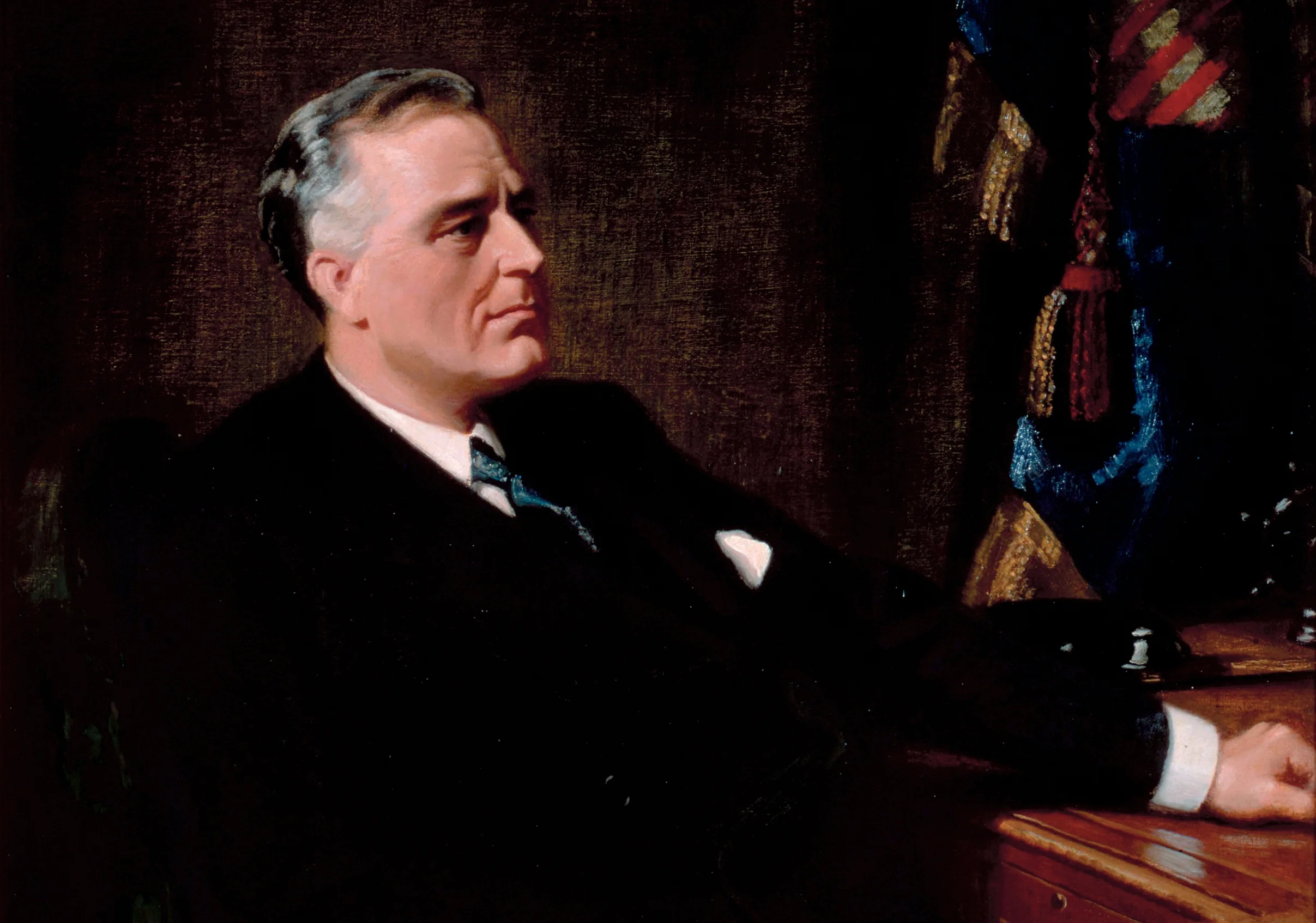The United States Marine Corps entered World War I as a small arm of naval infantry. Three decades later, the Marine Corps was poised for war with enhanced amphibious and aviation capabilities that proved vital in defeating Imperial Japan. Pivotal to the transformation of the Marine Corps was the Battle of Belleau Wood in 1918.
Innovation Determinants of the World’s First Integrated Air Defense System
Despite having the strongest air force in the world at the conclusion of the First World War, Britain faced a prominent strategic threat posed by a sizable French bomber force and the creation of the Luftwaffe, the German Air Force. To counter the threat, the British created the world’s first integrated air defense system—a synchronized nexus comprised of radar to detect enemy aircraft, a command and control network to relay warnings, and fighter aircraft to challenge threats.
#Reviewing The Unknowns: The Untold Story of America’s Unknown Soldier and WWI’s Most Decorated Heroes Who Brought Him Home
The Unknowns is a great book on the topic that surrounds the Tomb of the Unknown Soldier from the First World War. It’s also a good single volume work on the American Expeditionary Force’s involvement and experiences in the First World War. This book will resonate in military affairs and veteran organization. Finally, this book is a great read for anyone interested in the United States Marine Corps involvement in the First World War.
Were the French Really Doomed to Defeat in 1940?
Success will not only be a matter of mere military adaptability, but above all the result of a political, popular, and military convergence, especially if reserves or conscripts are to be used as force multipliers. Therefore, officers should develop a political understanding of their profession within society.
#Reviewing The Battle of the Somme
German troops to the southeast, at Verdun, were advancing further into French territory and the French Army was hurling itself at their lines to try and force the Germans to retreat. The entire idea behind the Somme offensive was to take pressure off the French forces at Verdun, while success or failure at the Somme was almost an afterthought. If there was any doubt in Foch’s mind, there does not seem so to those looking at the Somme from the remove of a century.
#Reviewing The Impact of the First World War on U.S. Policymakers
Alan Went to War: #Reviewing Goodbye Christopher Robin
The movie “Goodbye Christopher Robin” is a movie about war. About a war so big, so terrible, that it defies description. It is also a movie about a society in denial, where the wounds of war are ever-present, but unseen –– in those who came back, but also in those who were left behind waiting for them. “Goodbye Christopher Robin” is a nuanced movie since the best way to talk about war is in a nuanced manner. The big dry numbers are lost on people –– one can’t grasp the millions, the faceless, uniformed icons, killed and wounded. The ferocity of war can never be truly described in anyway meaningful. On the contrary, the pyrotechnics of modern cinema might only cheapen it by making entertainment out of the unimaginable. Maybe war can better be understood by and about the individual. By one’s story; by one’s suffering. And the suffering that is best understood is not that experienced in war, but after it ends. It is also best understood by the suffering of loved ones; even those only born because of the war, never to be in it themselves.
A Re-Examination of the Schlieffen Plan
What best explains the German General Staff’s decision to go to war in 1914? Was Alfred von Schlieffen’s war plan a self-fulfilling prophecy that pushed the Triple Entente to balance together against Germany? This article argues that the best, most recent scholarship concerning the impact of pre-war German military planning depicts a situation in which not one, but a multitude of of causal factors led Germany to go to war in 1914.
Networking to Learn: #Reviewing Learning to Fight
The essence of war is a competitive reciprocal relationship with an adversary possessing the capacity to make choices in battle. It is impossible to anticipate and predict with precision the contours of all future conflicts and the opponent’s strategy and discrete choices on the battlefield. Recognizing the need to adapt and implement the requisite changes is therefore inherent to the nature of war. The clash of arms is, therefore, also a competition in cycles of learning, reaction, or counteraction. The side that reacts best, and perhaps faster, increases their chances of success.
Beyond the Trenches with the U.S. Navy in the First World War: #Reviewing Crisis at Sea
Crisis at Sea is an exhaustive study of the U.S. Navy in the European theater. William Still brings a remarkable attention to detail in his latest volume, providing a thorough account of America’s role at sea in the First World War. Eleven years after its publication, this is still the definitive resource for its subject, and likely will remain so for many years to come.
#Reviewing A Burden Too Great to Bear
Our historical image of Woodrow Wilson reflects this tendency. We label individuals and ideas as “Wilsonian” if they exhibit a utopian vision of the world as it should be based on a set of moral ideas that, often times, appear quaint or naive. Rarely in the twenty-first century do we believe that being “Wilsonian” is a good thing, though many argue that neoconservatives and liberal interventionists both share principles borrowed from the twenty-eighth president. Our vision of Wilson, top hat on head and moralistic 14 Points in his coat pocket, being hailed by the war-fatigued European countries, must be bookended by his return to America, hat now in hand, begging the nation to approve the League of Nations. In this way, his failure and his series of strokes conveniently play out as a Grecian tragedy with an American chorus passing judgment on a president consumed with hubris.
#Reviewing Somme: Into The Breach
Hugh Sebag-Montefiore took advantage of the Somme’s centenary year to publish "Somme: Into the Breach," a weighty and well-documented volume privileging the voices and accounts of the men who fought it. He uses letters and diaries to resurrect the combatants as real men, husbands and fathers, while showing us unflinchingly how they suffered and died.
Wheat
The night before, he had dreamt about back home. It was pure, pleasant torture, a dream like that. He was back on his family’s farm, tilling the ground. Cursing at the ever-present rocks that seemed to get gleefully in the way of the blade. Maine grew rocks. And if you could convince it to stop growing rocks, you could grow other things.
Snatching Defeat from the Jaws of Victory
Since World War I, powerful nations victorious on the field of battle struggled to achieve political objectives because their post war settlements set conditions that facilitated future conflicts instead of ensuring lasting peace. The victorious strategist must not only ensure their pre-war political objectives are codified in the post war settlement, but the emissaries must also take great care and vigilance to end the war with strategic foresight that translates the military victory into lasting peace.
The Sykes-Picot Agreement at 100
The violence occurring in the Middle East is the result of a revisionist movement, namely the Islamic State of Iraq and Syria (ISIS), which seeks to conquer the greater region and expand its caliphate. A group that knows no geographical boundaries, its rapid rise is a symptom of what is widely regarded as the post-Westphalian trend the world has taken. Further, the volatility accompanying years of sectarian division has only been exacerbated by western involvement in the region, a century-old pattern of attempts to dictate the direction of governance dating back to World War I.
Belleau Wood: A Defining Moment for 20th-Century Marines
The Bois de Bellau, or Belleau Wood was a serene hunting preserve flanked by wheat fields and situated about 50 miles from Paris. It was once deemed a “quiet sector” by American military commanders, but in early June 1918 it would be transformed into a hellish landscape littered with scores of dead and wounded. Along this mile-long stretch of hardwood forest located near an unassuming village in France, the World War I (WWI) Marine Corps would encounter what many consider to be a seminal battle in its history, and would be transformed from the amphibious infantry of its formative years to an organization more closely resembling the expeditionary force it is known as today.
The Battle of Gallipoli
The Battle of Gallipoli was a watershed moment in the history of warfare. Few other battles were initiated with such high strategic hopes that were then dashed so quickly. Its influence carried far beyond the war in which it occurred. Simultaneously, it spurred some observers to proclaim that the amphibious assault was impossible and others, notably then-Captain Earl “Pete” Ellis of the United States Marine Corps, to completely reexamine the amphibious assault in a modern context and design modern forces to accomplish it.


















